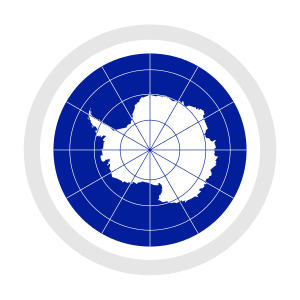Argentine Antarctica
- Afrikaans
- العربية
- Asturianu
- Azərbaycanca
- Català
- Čeština
- Dansk
- Deutsch
- Español
- Esperanto
- Euskara
- فارسی
- Français
- 한국어
- Հայերեն
- Bahasa Indonesia
- Italiano
- עברית
- ქართული
- Latviešu
- Lietuvių
- Magyar
- Македонски
- Bahasa Melayu
- Nederlands
- 日本語
- Nordfriisk
- Norsk bokmål
- Norsk nynorsk
- Oʻzbekcha / ўзбекча
- Polski
- Português
- Română
- Rumantsch
- Русский
- Simple English
- Slovenčina
- Српски / srpski
- Sunda
- Suomi
- Svenska
- ไทย
- Türkçe
- Українська
- اردو
- Tiếng Việt
- 中文
This article's factual accuracy is disputed. Relevant discussion may be found on the talk page. Please help to ensure that disputed statements are reliably sourced. (May 2021) (Learn how and when to remove this template message) |
The neutrality of this article is disputed. Relevant discussion may be found on the talk page. Please do not remove this message until conditions to do so are met. (January 2024) (Learn how and when to remove this template message) |
75°00′S 49°30′W / 75.000°S 49.500°W / -75.000; -49.500
Argentine Antarctica
Antártida Argentina | ||
|---|---|---|
 Argentine Antarctica map since 1950. Orcadas base from 1904. | ||
|
Governor Gustavo Melella | | |
| Area | ||
| • Total | 1,461,597 km2 (564,326 sq mi) | |
| • Land | 965,597 km2 (372,819 sq mi) | |
| [1] | ||
| Population | ||
| • Total | 469 | |
| • Density | 0.00032/km2 (0.00083/sq mi) | |
| Time zone | UTC-3 | |
| Argentine Postal Code | 9411 | |
| Area codes | 0054 + 02901 Esperanza and Marambio Stations: 0054 + 02964 | |
| First base | Orcadas Base (1904)[3] | |
| Number of bases | 13 bases (6 permanents and 7 seasonals) 64 others (huts, refuges, camps) | |
| Website | DNA.gov.ar | |
Argentine Antarctica (Spanish: Antártida Argentina or Sector Antártico Argentino)[4] is an area on Antarctica claimed by Argentina as part of its national territory. It consists of the Antarctic Peninsula and a triangular section extending to the South Pole, delimited by the 25° West and 74° West meridians and the 60° South parallel.[5] This region overlaps with British and Chilean claims in Antarctica. None of these claims have widespread international recognition.
Argentina's Antarctic claim is based on its presence on a base on
Administratively, Argentine Antarctica is a department of the province of Tierra del Fuego, Antarctica, and South Atlantic Islands. The provincial authorities are based in Ushuaia.[8] Argentine activities in Antarctica are coordinated by the Instituto Antártico Argentino (IAA) and Argentine Antarctic Program.
The Argentine exploration of the continent started early in the 20th century.
The estimated area of Argentine Antarctica is 1,461,597 km2 (564,326 sq mi), of which 965,597 km2 (372,819 sq mi) is land. The ice of the glaciers over the territory's surface has an average thickness of 2 kilometres. Temperatures fall in a typical range from 0°C in summer to -60°C in winter, although in certain points the temperature may drop to as low as -82°C and may rise to 18°C.[9]
Time zone
Argentina has six permanent Antarctic stations and seven summer stations.
According to the Argentine national census, in October 2010, Argentine Antarctica had 230 inhabitants (including 9 families and 16 children) at six permanent bases: 75 at
History
First expeditions
In 1815,
On 10 June 1829, the government of the
| Regions of Argentina | ||||||||||||||||||||||||||||||||||||||||||||||||||||||||||||||||||||||||||||||||||||||||||||||||||||||||||||||||||||||||||||||||||||||||||||||||||||||||||||||||||||||||||||||||||||||||||||||||||
|---|---|---|---|---|---|---|---|---|---|---|---|---|---|---|---|---|---|---|---|---|---|---|---|---|---|---|---|---|---|---|---|---|---|---|---|---|---|---|---|---|---|---|---|---|---|---|---|---|---|---|---|---|---|---|---|---|---|---|---|---|---|---|---|---|---|---|---|---|---|---|---|---|---|---|---|---|---|---|---|---|---|---|---|---|---|---|---|---|---|---|---|---|---|---|---|---|---|---|---|---|---|---|---|---|---|---|---|---|---|---|---|---|---|---|---|---|---|---|---|---|---|---|---|---|---|---|---|---|---|---|---|---|---|---|---|---|---|---|---|---|---|---|---|---|---|---|---|---|---|---|---|---|---|---|---|---|---|---|---|---|---|---|---|---|---|---|---|---|---|---|---|---|---|---|---|---|---|---|---|---|---|---|---|---|---|---|---|---|---|---|---|---|---|---|
| ||||||||||||||||||||||||||||||||||||||||||||||||||||||||||||||||||||||||||||||||||||||||||||||||||||||||||||||||||||||||||||||||||||||||||||||||||||||||||||||||||||||||||||||||||||||||||||||||||














